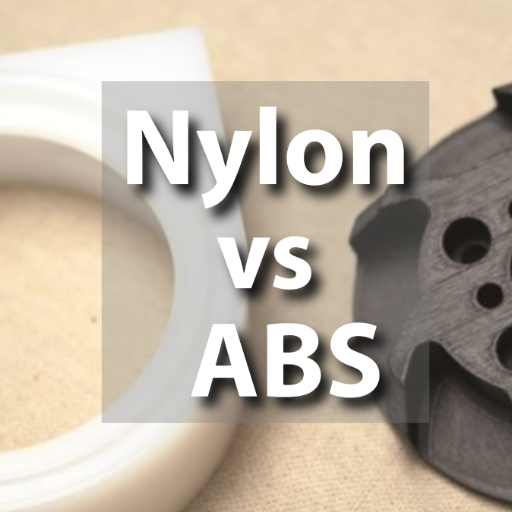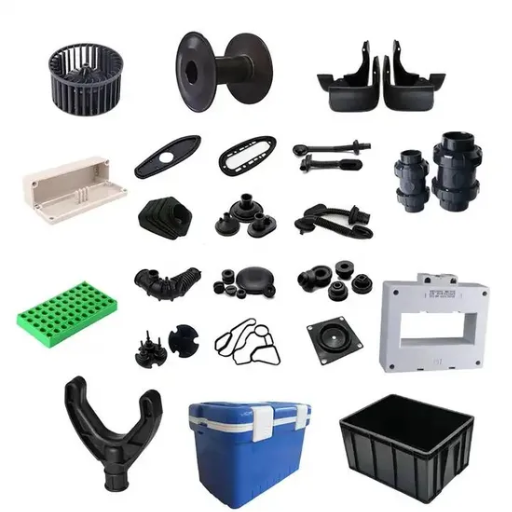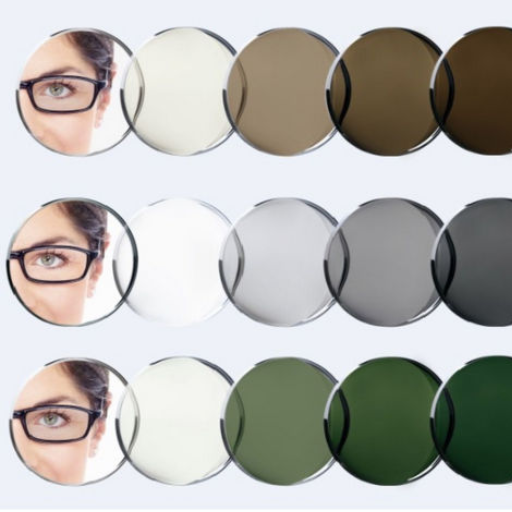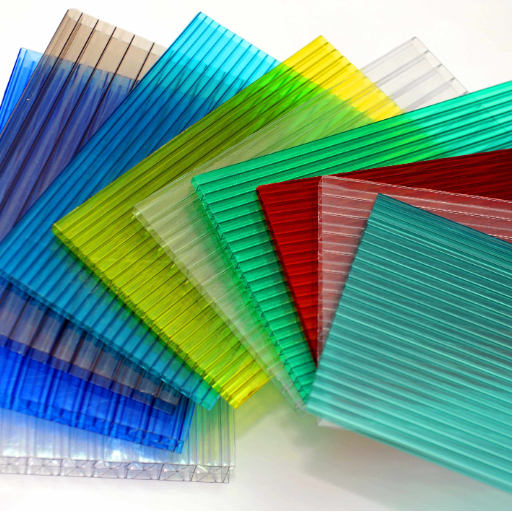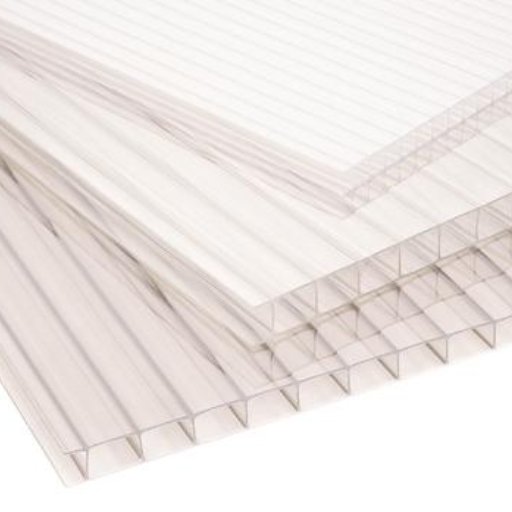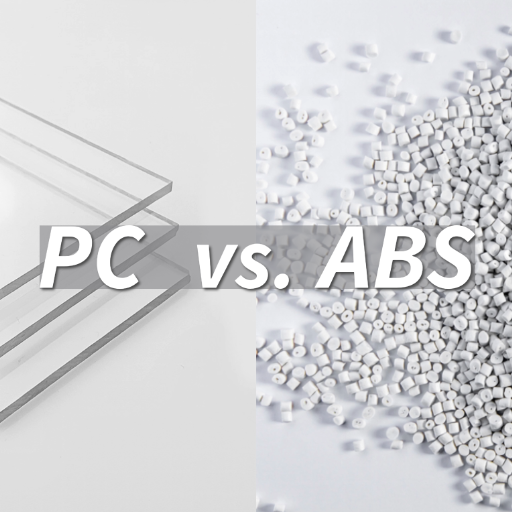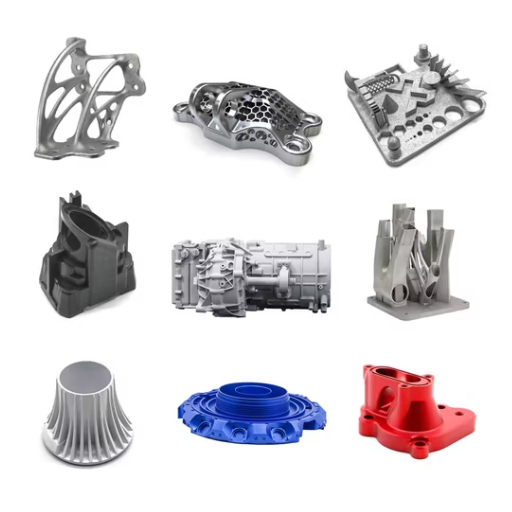Also called acetal or Delrin, polyoxymethylene (POM) is a type of high-performance engineering plastic, and its mechanical properties are superb. This guide strives to explain all aspects relevant to the reader concerning POM, especially in regards to plastic data sheet interpretation. As a product designer, engineer, or materials expert, being familiar with specific details of POM, such as strength, durability, and wear resistance, can be vital in making the right materials decision for different applications. The aim of this article is to enable you to make well-informed choices regarding POM plastic data sheets to guarantee efficiency and dependability on your project.
What is POM and how is it different from other plastics?

Known for its outstanding rigidity, low friction, and excellent dimensional stability, Polyoxymethylene, or POM, is an engineering thermoplastic with high-performance capabilities. Unlike many other plastics, POM head and shoulders above the plastic crowd with strength as well as resilience at the same time, making POM the best candidate for precision parts in demanding applications. Its superior wear resistance in conjunction with structural integrity while being under stress differentiates POM from the rest of the commodity plastics, and along with its resistance to chemicals, moisture, and heat, adds even further versatility in application across a multitude of industries from automotive to consumer electronics.
Understanding the chemical structure of Polyoxymethylene
The molecular structure of Polyoxymethylene (POM) underscores its outstanding performance. POM has a repeating structure of -CH2O- and is a crystalline polymer which is formed through the polymerization of formaldehyde or its derivative like trioxane. This structural configuration contributes to the mechanical strength of POM, its low friction coefficient, and its remarkable dimensional stability. The wear resistance and the ability to withstand high stress without deforming are attributed to its tightly packed crystalline structure. Understanding this structural basis is important in recognizing why POM stands out among other engineering materials for precision components.
Comparing POM to other engineering plastics
POM stands apart from other engineering grade plastics due to its excellent and unparalleled strength-to-weight ratio coupled with low friction and outstanding wear properties. While nylon has relatively good moisture absorbing dimensional stability, POM’s moisture resistant dimensional stability makes it much more ideal for humid or wet environments. In contrast to polycarbonate, POM has much greater fatigue resistance, which increases durability in repeated mechanical stress situations. Despite the relative affordability of materials like polyethylene (PE), nothing compares to the unparalleled rigidity and strength offered by POM for precision parts in the automotive, electronics, and manufacturing industries.
POM-C vs. POM-H: Copolymer and Homopolymer differences
the mechanical properties and how these two types perform under different conditions is where the most differentiation of POM-C (copolymer) and POM-H (homopolymer) lies. In cases where moisture or chemicals could be present, POM-C is ideal due to its better chemical resistance and dimensional stability. POM-H, however, provides higher rigidity and fatigue strength which makes it excel in performing applications which require high durability and mechanical performance alongside stamina. Each one of them has strong points but picking the appropriate one is a question of the application’s needs. I normally recommend POM-H for the aggressive dynamic, high-stress conditions, and POM-C for these cases is the better option when a chemical resistant and moisture resilient environment is the issue.
What are the key mechanical properties of POM?

POM, also referred to as polyoxyethylene, is well known for having exceptional mechanical properties which include high tensile strength, rigidity, and dimensional stability. These characteristics make it ideal for precision components. It has low friction coefficients accompanied by outstanding wear resistance, leading to its use in moving parts. Furthermore, POM exhibits excellent fatigue endurance alongside resistance to sustained creep under loads, which provides durability in demanding applications.
Tensile strength and rigidity of Polyacetal
Polyacetal (POM), its tensile strength and rigidity are, in my opinion, two of its standout characteristics. POM’s reliability under load is remarkable – it can endure significant mechanical stress without deforming. This makes POM particularly well-suited for precision and robust applications like high-performance gears and structural components. As a rigid material, POM can resist bending and warping, guaranteeing accurate and stable performance over time. Consequently, components made of POM will, without any doubt, maintain their shape and intended function.
Dimensional stability and thermal expansion characteristics
Due to its dimness, rigidity and low water absorption, POM shows excellent dimensional stability. Its components are able to withstand different temperature changes without excessive deformation due to well-balanced thermal expansion characteristics. This makes POM a dependable candidate for environments subjected to thermal stress where dimensional tight tolerances and consistent performance are crucial.
Friction and wear resistance of POM material
the material’s resistance to both friction and wear are its most notable benefits. For its use in machinery such as gears and bearings, which need sliding and rotary motions, POM’s low friction coefficient guarantees effective movement. Furthermore, its extraordinary resistance to abrasion ensures that POM parts endure for long durations despite experiencing mechanical loads. This combination of properties makes POM reliable for industries where durability and accuracy are essential.
How is POM manufactured and processed?

The polyoxymethylene (POM) is produced from polymerization of formaldehyde or trioxane, resulting in a rigid thermoplastic. POM is generally shaped and machined using injection molding and extrusion, which gives intricate detail to the parts. These techniques guarantee a robust and dimensionally stable POM ideal for many industries. Correctly drying the resin before processing is important for things such as voids and lower mechanical properties in the end product.
Polymerization process for Acetal resin production
Building a high-performance material requires a highly controlled environment, which starts with the Acetal resin production. In my experience, the process usually starts with the polymerization of formaldehyde and its relatives, like trioxane, which is frequently catalyzed to construct polyoxyethylene (POM) chains. The polymer chain’s instability can lead to numerous issues. As such, the precision for temperature, catalyst, and reaction conditions is crucial. When the polymer crosses its molecular weight threshold, the resulting material receives stabilization treatment in order to improve its resistance to thermal and chemical breakdown, which allows for better quality as well as performance consistency across applications.
Injection molding and other processing methods for POM
Because of its capability to manufacture intricate features with consistent quality, POM can be processed using injection molding, which is one of the most popular procedures. This process requires melting POM resin into a liquid form and injecting it into an isolated cavity within a die under great pressure. After a set amount of time, the substance is cooled to below its solidification temperature, thereby allowing it to take the form of the die. Other processing methods include extrusion, which is ideal for making continuous profiles such as rods and sheets, and machining, where the low friction and superb dimensional stability of POM make it suitable for precision parts. Each method requires careful control over the processing parameters of temperature and pressure, so that the system works as expected and does not cause thermal degradation to the product.
Available grades and forms of POM material
POM material comes in varying grades and types, catering to a wide array of applications. The most common ones are standard grades – homopolymer and copolymer – and both have unique performance features. Strength and stiffness are the key attributes of homopolymer grades, while chemical resistance and thermal stability are the strong points of copolymer grades. Furthermore, specialty grades such as glass-filled impact-modified and UV-stabilized versions are tailored for specific purposes like improved outdoor or general durability performance. Depending on the project’s requirements, POM can be supplied readily as sheets, rods, or tubes for ease of machining and fabrication.
What are the typical applications of POM?

POM is popular in many industries owing to its great mechanical properties and adaptability. Common uses encompass the manufacturing of items like gears, bearings, and bushings for automotive and industrial machinery. It is also employed in consumer products such as zippers, buckles, and appliance parts and electrical engineering items like connectors, switches, and housings. Due to its strength and chemical resistance, it also is great for use in plumbing fixtures and medical devices.
POM usage in engineering and automotive industries
I have observed that POM (Polyoxymethylen) has become a necessity in the engineering and automotive fields because of its unrivaled stiffness, resistance to wear, and accuracy. I have observed it extensively for the manufacturing of gears and bearings that have to endure constant mechanical loads as they are outstandingly durable. POM’s strength in holding mechanical properties also makes it a preferred option for complex intricate detail like sensor housings and fuel system parts. Moreover, POM’s resistance to chemicals and physical degradation increases its reliability, making it a favorable candidate in critical automotive systems and industrial machines. In weight-sensitive applications, it always assures performance and effectiveness in areas needing exactness in engineering.
Bearing and low friction applications of Polyoxymethylene
The self-lubricating features of Polyoxymethylene (POM) and its magnificently low friction coefficient make POM one of the highest ranked polymers in bearing and low friction applications. This self-lubricating feature makes it the best option for parts like gears, bushings, and sliding components that go through smooth motion and minimal wear. Moreover, its superior performance under severe industrial and automotive conditions, including high loads and fluctuating temperatures, makes it even more advantageous. Using POM in these scenarios optimizes efficiency, reduces the need for maintenance, and assures exceptional reliability throughout its life.
POM in consumer products and everyday items
polyoxymethylene (POM) is essential in the development of consumer goods that require accuracy and strength, in equal measure. For example, its resistance to friction and wear is utilized in the production of zippers, kitchen tools, and even plastic fasteners. POM also finds a lot of application in the electronic industry in the production of isolators and connectors due to its stability and insulating capabilities. This material’s ability to sustain perpetual performance even under everyday strain renders it priceless for a plethora of common items.
How to interpret a POM material data sheet?

In order to assess a POM material data sheet efficiently, focus on properties like mechanical strength, thermal resistance, and chemical compatibility. To begin, evaluate the tensile strength and elongation at break to understand how the material behaves under stress. Following, look at the heat deflection temperature and the melting point to evaluate the high-temperature performance of the material. Also, pay attention to the moisture absorption rate and chemical resistance of the material with regards to your application environment. These considerations provide insights into the environment compatible with the POM grade that is under examination.
Understanding mechanical properties listed in POM datasheets
My first step of evaluating mechanical properties of POM (Polyoxymethylene) is determining the requirements of a concrete application. In the example, if the material is expected to be used in a high stress operational environment, I pay attention to its tensile strength and elongation at break. These parameters provide insight into the material’s resistance to breaking or permanently deforming under forces.
Following this, for cases where temperature is a variable, I focus on the heat deflection temperature (HDT) as well as the melting point. HDT is particularly useful as it describes at what temperature a material will start to deform under a load, and in turn, the melting point sets the upper ceiling of thermal performance. This is particularly important for parts which undergo continuous or cyclic heat.
In addition, impact strength is another crucial factor that I assess, especially for dynamic applications where the material is likely to sustain shocks or sudden forces. Having a high impact strength ensures that the material is durable and reliable over time.
In most cases, for high humidity environments, I check the moisture absorption rate of the material. Lower moisture absorption rates ensure good performance in humid conditions, allowing materials with lower mechanical properties and dimensions to perform better. In the same way, I verify the chemical resistance the material may have towards oils, fuels, or cleaning agents through which the material may be exposed.
Thoroughly examining these aspects one by one, as well as to the relevant use, I can ascertain if the POM grade in question will meet the functional and ecological needs. Seeing these factors guarantees the fulfillment of the material for the expected duration.
Thermal and chemical resistance information in POM specifications
Polyoxymethylene (POM) has a remarkable degree of thermal stability and resistance to chemicals, making it possible to use it in extreme applications. While undergoing thermal stress, POM usually endures continuous use temperature up to 100-120°C without considerable degradation. In terms of chemical resistance, it is resistant to solvents, hydrocarbons, alcohols, and diluted acid, but strong acids and alkalis are a threat. These features assist with endurance in durability needed in the environment, which needs resistance for heat and chemicals.
Processing guidelines and recommendations in POM data sheets
Throughout my experience with POM, I always stress the adherence to the recommended processing parameters as per the materials data sheet. On a general note, a melt temperature capped between 190°C and 230°C allows for proper flow and mitigates the risk of thermal damage on a fully established component. It is also very important to maintain a coherent mold temperature, which usually falls between 80°C and 120°C, to ensure good surface quality and dimensional stability of the molded part. Furthermore, bringing down the moisture content of the resin to below 0.1% before processing also aids in avoiding bubbling or surface imperfections. I have come to learn that by following these steps, production efficiency and product performance are greatly improved.
What are the advantages and limitations of using POM?

Polyoxymethylene, or POM as it is often abbreviated, is visible in many industries across the globe because of its prominent uses in manufacturing and fabrication. It possesses great strength, stiffness, and high dimensional stability of the polyoxyethylene, which makes it convenient for making precision parts. Its low friction coefficient and excellent wear resistance make it a suitable candidate for mechanical POM applications. It is also reasonably resistant to solvents and fuels. Nonetheless, POM has several downsides like low resistance to UV light and gradual disintegration when strongly-acidic or basic conditions are present. Its high thermal expansion can be problematic for certain applications, as well as its propensity to catch fire, which poses a problem in many environments that demand higher safety from fire hazards.
Benefits of POM over other engineering thermoplastics
Considering my background in different engineering thermoplastics, I would have to say that POM is unique in its mechanical properties. It has low friction and great wear resistance, both of which are quite useful for components that have relative motion, such as gears and bearings. Some alternatives to POM are compared to lack the ability to retain strength and rigidity under high stress and continuous use, which is critical in precision engineering. Its chemical resistance is also highly beneficial for industries that deal with fuels and solvents. While every material has its trade-offs, POM is a dependable and versatile choice in demanding environments.
Potential drawbacks and considerations when using Acetal
Acetal’s major drawback is its UV sensitivity, which under prolonged use outdoors without stabilization can lead to UV degradation. Moreover, Acetal possesses some degree of resistance to strong acids and oxidizing agents, which would be a concern in a heavily exposed chemical environment. Relatively high thermal expansion, creep under load deformation, and loss of dimensional stability over time are some of the other factors that designers need to be concerned with in some applications. Recognizing these constraints enables more effective application of Acetal in its suitable contexts.
How to choose the right POM grade for your application?

Selecting an appropriate POM grade for an application case will need assessment of essential elements like mechanical needs, environmental factors, and specific functional details. In high-load applications, reinforced grades have enhanced strength and stiffness. If wear and friction are of concern, lubricated and modified grades that lower abrasion should be employed. Outdoors and UV-exposed applications need UV-stabilized grades, and chemical resistance requirements should match with the grade and specific chemicals it is designed for. Consult the technical data sheets and collaborate with material suppliers whenever possible to ensure the selected POM grade fulfills all required parameters of the application.
Factors to consider when selecting POM material
Identifying the right POM From the onset, I always analyze an application’s needs in detail. Stress, environmental contact, and exposure to activities are important things that I evaluate to determine fit. In the case of high load-bearing activities, reinforced grades do offer the higher strength in most situations. On the other hand, applications where there is continuous movement benefit from lubricated variants that help reduce wear. The same level of detail goes to exposure to chemicals. I also make sure that the material’s resistive ability meets the specific area it will be placed on. For outdoor purposes, I make sure that the materials have had sufficient UV stabilizers added. This way I make sure that the materials will last a long time without damage. My techniques always include checking the finest detailed technical information as well as consulting with my reliable suppliers to make sure that I get the best of the best for the intended application.
Comparing different POM grades and their properties
The difference in various POM grades comes down to how their individual characteristics mesh with the needs of the application. For general-purpose use, standard POM is best due to its great dimensional stability and low friction. Glass-filled POM, a reinforced grade, increases stiffness and strength tremendously for high-stress regions. Lubricated grades perform well in minimizing friction and wear in dynamic parts, ensuring long life in moving designs. For outdoor applications, UV-stabilized POM withstands the degrading effects of sunlight, making it the ideal choice. Each grade is optimized to tackle a specific problem, enabling exact tailoring of offers for certain industrial requirements.
Reference
- Technical Data Sheet Acetal (POM) – 3Faktur
- Technical Data Sheet Delrin® (Acetal Homopolymer) – Laminated Plastics
- Acetal (POM-C & POM-H) Datasheet – Thames Stock
Frequently Asked Questions (FAQs)
Q: What is POM material and how is it supplied?
A: POM (Polyoxymethylene) is a semi-crystalline thermoplastic material known for its good mechanical properties and abrasion resistance. It is typically supplied in a granulated form, making it easy to use in various manufacturing processes.
Q: What are the key differences between POM homopolymer and copolymer?
A: POM homopolymer and copolymer differ in their molecular structure and properties. POM homopolymer, also known as acetal homopolymer, has a simpler structure and often exhibits better mechanical properties and wear resistance. Copolymer POM, on the other hand, typically offers improved thermal stability and resistance to hydrolysis.
Q: How does POM compare to other plastic materials like nylon and polycarbonate?
A: Compared to nylon and polycarbonate, POM generally offers better dimensional stability, lower moisture absorption, and excellent wear resistance. However, nylon may have better impact strength, while polycarbonate typically has higher heat resistance. The choice between these materials depends on specific application requirements.
Q: What are the main manufacturing processes used to produce POM parts?
A: POM can be processed using various methods to achieve the desired shape by applying heat and pressure. Common manufacturing processes include injection molding, extrusion, and machining. POM can be machined using traditional methods such as turning and milling. However, it’s important to note that POM is not typically suitable for blow molding.
Q: How is POM material polymerized?
A: POM is polymerized by anionic catalysis, typically starting with formaldehyde or its cyclic trimer, trioxane. The process involves the polymerization of trioxane, followed by purification of the trioxane by distillation and extraction to remove water and other active compounds. This results in the formation of the desired polymer structure.
Q: What are some common additives used in POM formulations?
A: Common additives in POM formulations include stabilizers to improve heat resistance, lubricants to enhance processing and wear properties, and reinforcing agents like glass fibers to increase strength and stiffness. Some grades of POM may also include additives to improve UV resistance or reduce environmental stress cracking.
Q: What are the main advantages and limitations of using POM in industrial applications?
A: Advantages of POM include its high strength, excellent dimensional stability, good wear resistance, and low friction. It also offers good resistance to many chemicals and solvents. However, limitations include its susceptibility to UV degradation, difficulty in bonding to other materials, and potential for formaldehyde emissions during processing at high temperatures.
Q: Who discovered POM and when was it first commercialized?
A: POM was first discovered by Hermann Staudinger, who received the Nobel Prize in Chemistry for his work on macromolecules. However, it was first commercialized in the 1960s by companies like DuPont (under the trade name Delrin) and Celanese (as Hostaform). Since then, it has become a widely used engineering plastic in various industries.







